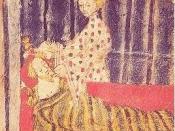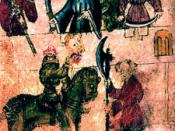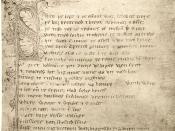Can Middle English Romances be considered popular and non-courtly? Discuss
Middle English romance is one of the most comprehensive of literary forms and its range of subject matter and metrical styles is vast. It is difficult to 'classify' romances as they exhibit so much variety, and some critics have questioned whether it is possible to speak of a romance genre at all.
In the beginning of the Middle Ages, the word 'romance' was a term used indiscriminately to any kind of long narrative in French verse. Gradually, the term 'romance' began to refer to tales describing knightly prowess, usually set in remote times or places, and involving some element of the supernatural.
The early Middle English romances are strikingly different from the sophisticated voice of French courtly romance. French courtly romance was characteristic of high medieval culture, with only elite audiences capable of understanding the code of social values they presented.
Twelfth-century French romance concerned itself with the examination of ideal aristocratic values and there was a notable distance between the poet and the audience. Early middle English romance however spoke to a larger community, and the narrating voice made an attempt to include itself and its audience in the world the poem is describing. Because of this fact they can be considered popular as they appealed to the wider general population.
Middle English romances can also be described as popular as travelling minstrels performed the stories to people across the country. Thus the stories were widely travelled and therefore widely known. Minstrels performed the stories for a range of people, including the King and the Court, and can consequently be called popular as they expanded across the social spectrum. A strong example of a minstrel text is King Horn as the repetitions in the text lend to the idea...


